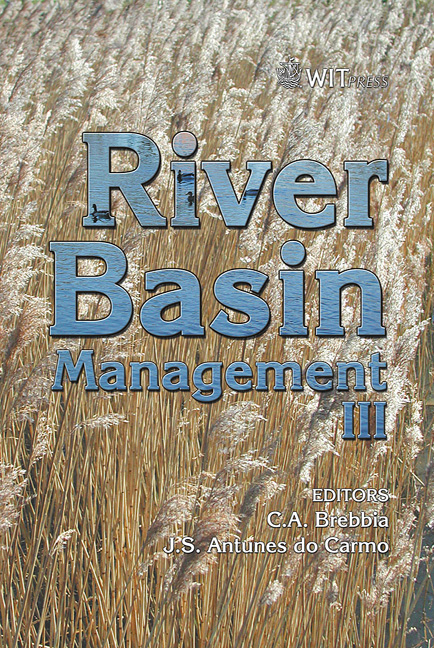Water Quality Evaluation Of The Tecate River, Mexico For Reuse Purposes
Price
Free (open access)
Transaction
Volume
83
Pages
6
Published
2005
Size
399 kb
Paper DOI
10.2495/RM050391
Copyright
WIT Press
Author(s)
J. G. Rodríguez-Ventura, F. T. Wakida, R. Radilla-Camacho & S. Chong-Silva
Abstract
The population growth rate in the region of Tijuana, Mexico has been approximately 7% annually. This explosive population growth has produced several negative environmental impacts in the Tijuana River Basin and a great burden on the regional water resources. At the moment, more than 90% of the water used in the city of Tijuana is imported from the Colorado River Basin located approximately 200 Km to the east. Therefore, the efficient use and the reuse of water, as well as the search of alternative water sources, have begun to be very important in this region. The Tecate River is part of the Tijuana River Basin, which is a binational basin shared by Mexico and the United States of America. The river used to be dry for most of the year, except in the rainy season. However, the discharges of wastewater treatment plants located in the town of Tecate have produced a perennial stream of poor quality water (170 L s -1 ), because wastewater production has exceeded treatment capacity and part of it is discharged without treatment. The objective of this study is to evaluate the seasonal behavior of selected pollutants in the river and identify the point where the water quality is suitable for reuse for agriculture purposes or aquifer recharge by infiltration. Four sites were sampled during a period of 12 months in 2003-2004 and samples were analyzed for chemical oxygen demand (COD), biochemical oxygen demand (BOD), total nitrogen, ammonia nitrogen, nitrite, nitrate and phosphate. A reduction of 60% in BOD and 70% in COD concentrations was observed 19 Km from the discharge of the municipal wastewater treatment plant. A similar trend was found for phosphate. Nitrate concentration reaches its minimum levels at 12 Km (1.52 mg/L). The results have shown that this water resource cannot be reused for agriculture, but it can be used for aquifer recharge. Keywords: river water quality, water reuse, river pollution, nitrogen, Tijuana, Mexico.
Keywords
river water quality, water reuse, river pollution, nitrogen, Tijuana, Mexico.





